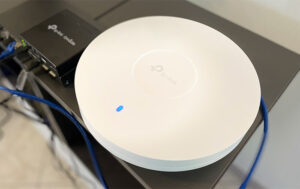If you’re experiencing long buffer times, dropped video calls, or dead zones in your home, a wifi booster may be the solution for you. Wifi boosters are devices that receive a wireless signal from a router, boost it, and then broadcast it further. They can also be referred to as repeaters or extenders.

If you’re having trouble getting a good wireless signal, it’s time to get your network boosted. Wifi boosting is an inexpensive way to improve your wireless speeds and range, and it doesn’t require any extra hardware or software.
A wifi booster works by amplifying your existing wireless signal, then rebroadcasting it to reach more areas. It can cost less than $100 and is an excellent investment for anyone who wants better wireless coverage.
An antenna is the most important part of any wifi booster, and it’s best to buy one with a higher gain than your current router. Generally, home routers come with small antennas, which have a gain of 4-5 dBi (decibels relative to the isotropic radiator at radio frequencies).
When you’re looking for a wireless booster, look for one that has at least nine dBi. A higher dBi means more range, which is particularly useful in situations where your router can’t be centrally located.
In some cases, a wireless booster can even help you boost your wifi speed for gaming. These devices are designed to take control of your entire home network and optimize it for optimal performance, making them an ideal choice for gamers who want to get the most out of their wireless connection.
If your wireless coverage is spotty, a signal booster will get you out of the woods and back to the fast internet speeds you were enjoying before. However, if you’re dealing with poor coverage all around your house or office, you may need to consider other options.
There are other things you can do to help improve your wireless coverage, and they all involve a little bit of tweaking and some simple adjustments. First, you can switch to the 5 GHz band, which offers 24 non-overlapping channels instead of just 3. This will significantly reduce the chances of signal interference.
Next, you can update the firmware of your router to improve its performance and security. Most newer routers have automatic updates, but it’s always worth checking to make sure you’re running the latest version.
It’s also a good idea to test your wired internet speeds as well as your wireless ones since both are affected by the same factors. This will give you a better sense of whether your wireless speeds are the problem or if they’re impacted by something else.
Whether you’re streaming movies in HD or video conferencing with your friends, faster internet speeds are essential to a successful online experience. That’s why it’s crucial to know your wifi’s speed limitations and how to improve them.
Using a higher-speed router and modem can help you get better internet speeds throughout your home. However, if you’re not able to upgrade your router or want to make your existing one faster, there are some other tricks you can try.
Wifi boosting can help you make your wifi connections faster in areas that don’t have the best coverage or weak signal strength. For instance, you can try switching your router from 2.4 GHz to 5 GHz. Changing the frequency of your router will give you more bandwidth and help eliminate interference.
The more bandwidth your connection has, the less likely you will experience lag when multiple devices are trying to connect at the same time. That’s especially important if you have a bunch of smart devices like TVs, tablets, and other connected home devices in your home.
For example, if you have a smart TV with a connected speaker that’s constantly streaming music, the sound quality can become choppy when there are too many people trying to access it at once. This is why it’s a good idea to have a plan with enough bandwidth to support all the devices in your home.